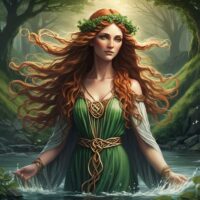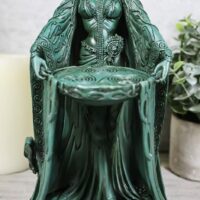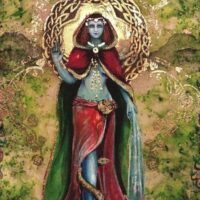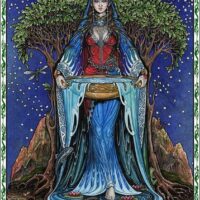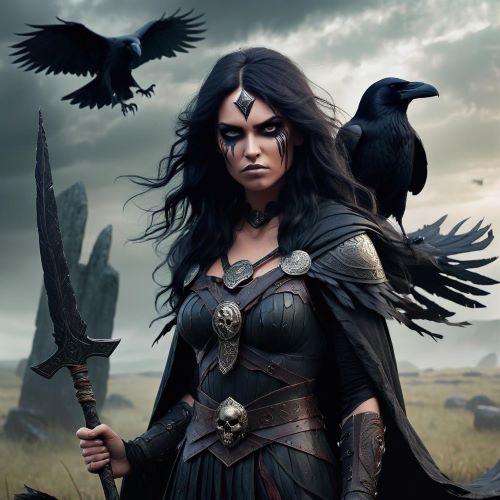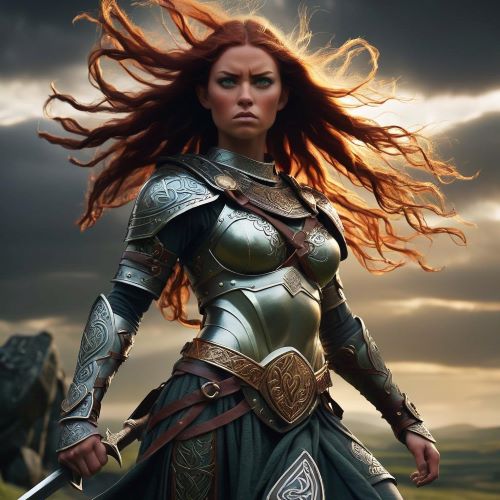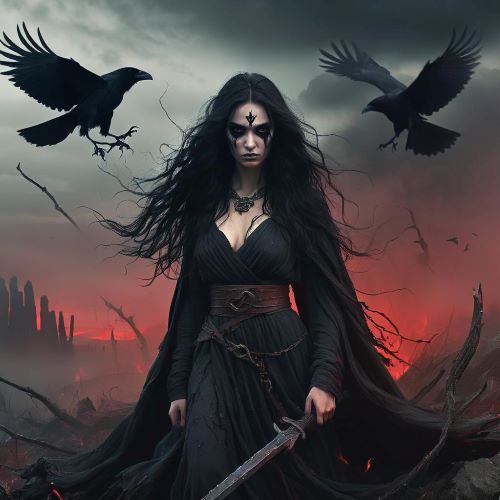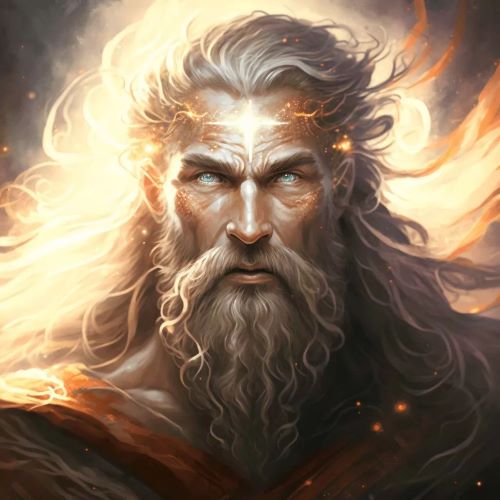Danu : The Mother Goddess
Listen
At a glance
| Description | |
|---|---|
| Origin | Irish Mythology |
| Classification | Gods |
| Family Members | N/A |
| Region | Ireland |
| Associated With | Mother or Giants, Creation |
Danu
Introduction
Danu, a revered figure in Irish mythology, is often seen as the mother goddess of the Tuatha Dé Danann, whose name means “the people of the goddess Danu.” Though direct references to her are scarce in primary texts, her influence is undeniable. She represents the forces of nature, fertility, and abundance, making her one of the most significant deities in the Celtic tradition. Her legacy continues to shape Celtic culture, religion, and storytelling, leaving an enduring imprint on mythology and beyond.
Physical Traits
Danu is deeply connected to the natural world, often associated with rivers, fertility, and the nourishment of the land. Her presence is linked to flowing water, particularly the River Danube, suggesting a widespread influence beyond Ireland. In Celtic tradition, she symbolizes life’s abundance, with landmarks like the Paps of Anu in County Kerry serving as physical reminders of her nurturing essence.
Depictions of Danu vary, but she is commonly envisioned as a regal and graceful figure, embodying both strength and maternal care. Her flowing hair reflects her ties to rivers, while her attire, often adorned with natural motifs, reinforces her role as a goddess of the earth. Whether seen as a life-giver or a protector, Danu’s image exudes power and benevolence.
Family
Danu is best known as the ancestral mother of the Tuatha Dé Danann, the legendary race of deities, warriors, and master artisans in Irish mythology. Her connection to them extends beyond lineage, as she embodies their defining traits of magic, wisdom, and skill. Some myths name Brigid as her daughter, while others link her to the Dagda, the powerful god of abundance and wisdom. The exact genealogy of the Tuatha Dé Danann varies across sources, often presenting conflicting accounts of parentage.
As the matriarch of these divine beings, Danu holds immense reverence in Celtic tradition. The Tuatha Dé Danann, known for their supernatural abilities and heroic feats, include prominent figures such as Lugh, the god of light and craftsmanship, and Brigid, associated with poetry and healing. Through them, Danu’s influence extends across mythology, reinforcing her role as a foundational force in Irish legend.
Other names
Danu’s influence extends beyond Irish mythology, with variations of her name appearing across different Celtic and Indo-European traditions. She is sometimes called Dana, Anu, or Danann, each reflecting a different aspect of her identity as a mother goddess. In Welsh mythology, she is mirrored by Dôn, the matriarch of the Children of Dôn, a group comparable to the Tuatha Dé Danann.
Some interpretations suggest a connection between Danu and the Morrígan, whose proper name is occasionally given as Anu, hinting that she may have once been regarded as the supreme mother deity. These variations in name and role demonstrate her widespread reverence and the enduring legacy of maternal goddesses in Celtic tradition.
Powers and Abilities
Danu’s divine powers encompass creation, protection, and wisdom, making her a formidable force in Irish mythology. As a mother goddess, she nurtures both the land and its people, ensuring fertility, prosperity, and the continuity of life. Her influence extends beyond agriculture to the spiritual realm, where she represents deep knowledge and esoteric understanding.
She is also a guardian figure, offering protection to the Tuatha Dé Danann and guiding them with her wisdom. Her connection to magic allows her to manipulate natural forces, shape-shift, and influence the elements. While she is often associated with nurturing and growth, Danu also embodies strength and leadership, balancing gentleness with the power of a warrior goddess.
Modern Day Influence
Danu’s presence endures in modern Neo-paganism, where she is honored in rituals focused on abundance, prosperity, and spiritual guidance. As a symbol of feminine power and wisdom, she resonates with those reviving Celtic traditions and seeking a deeper connection to nature. Many Wiccan and Druidic practitioners invoke her as a guardian of fertility, protection, and insight, reinforcing her role as a nurturing yet powerful deity.
Her influence extends into popular culture, appearing in works like Sanctuary and Assassin’s Creed Valhalla, where she is linked to mysticism and ancient lore. Beyond spiritual and artistic interpretations, Danu’s legacy is reflected in geography—rivers such as the Danube are thought to bear her name, emphasizing her enduring association with flowing water and the sustenance of life. Whether in mythology, modern spirituality, or cultural adaptations, Danu continues to inspire those drawn to the divine feminine and the mysteries of the natural world.
Related Images
Source
MacCulloch, John Arnott. “The Religion of the Ancient Celts.” Constable and Company Ltd., 1911.
Green, Miranda. “Celtic Myths.” University of Texas Press, 1995.
Ellis, Peter Berresford. “The Mammoth Book of Celtic Myths and Legends.” Robinson, 1999.
“Danu.” Wikipedia. Accessed March 1, 2025.
“The Tuatha Dé Danann.” Mythopedia. Accessed March 1, 2025.
“Celtic Mythology: The Goddess Danu.” Celtic Studies Resources. Accessed March 1, 2025.
Frequently Asked Questions
What is lorem Ipsum?
I am text block. Click edit button to change this text. Lorem ipsum dolor sit amet, consectetur adipiscing elit. Ut elit tellus, luctus nec ullamcorper mattis, pulvinar dapibus leo.
What is lorem Ipsum?
I am text block. Click edit button to change this text. Lorem ipsum dolor sit amet, consectetur adipiscing elit. Ut elit tellus, luctus nec ullamcorper mattis, pulvinar dapibus leo.
What is lorem Ipsum?
I am text block. Click edit button to change this text. Lorem ipsum dolor sit amet, consectetur adipiscing elit. Ut elit tellus, luctus nec ullamcorper mattis, pulvinar dapibus leo.
What is lorem Ipsum?
I am text block. Click edit button to change this text. Lorem ipsum dolor sit amet, consectetur adipiscing elit. Ut elit tellus, luctus nec ullamcorper mattis, pulvinar dapibus leo.
What is lorem Ipsum?
I am text block. Click edit button to change this text. Lorem ipsum dolor sit amet, consectetur adipiscing elit. Ut elit tellus, luctus nec ullamcorper mattis, pulvinar dapibus leo.

